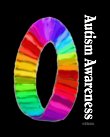Friday April 6, 2007
Revolutionary New Test for Early Detection of Autism
Revolutionary New Test for Early Detection of Autism
1Three hallmark behaviors were the focus of their investigation:
- Protodeclarative pointing — by fourteen months of age a normal infant will point at an object in order to get another person to look at that object
- Gaze-monitoring — by fourteen months an infant will often turn to look in the same direction an adult is looking
- Pretend play — by fourteen months children will begin to play using object substitution,e.g. pretending to make tea and drink it out of a toy cup.
All three behaviors are typically absent in school-age children with autism.
Cambridge researchers looked at sixteen thousand children in the southeast of England during routine eighteen month well-child examinations. They checked to see if the children had evidenced each of these three key behaviors. Only twelve children out of the sixteen thousand consistently failed in all three key areas at their eighteen month check ups. Ten out of these twelve later proved to have autism. Of twenty-two additional children who failed in either one or two of the behaviors, none turned out to have autism, but 68% did later have a speech delay.
This powerful screening test is remarkably simple, painless, and cost-effective. It promises to revolutionize the lives of the next generation of children with autism. If your child isn’t exhibiting these behaviors by 18 months of age, bring this to your pediatrician’s attention.
|
Alan Greene MD FAAP |
| April 14, 1996 | |
| Reviewed by Khanh-Van Le-Bucklin MD September 2000 | |
| Footnote References:
1Baron-Cohen et al. British Journal of Psychiatry, 168:158-163, 1996) |
|

